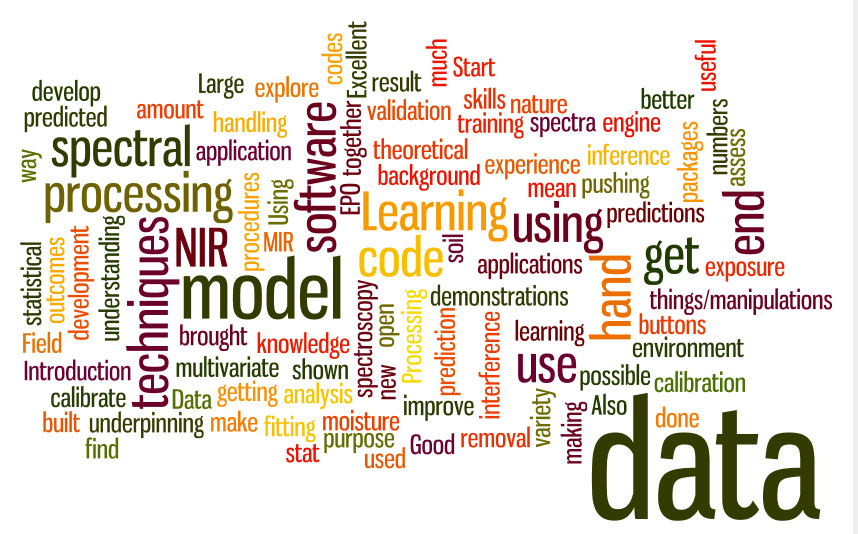The desire to measure soil carbon and other soil properties rapidly and more cheaply has resulted in soil spectroscopy becoming a hot topic of research in soil science over the past few years. Researchers in the Soil Security Lab in the University of Sydney’s Faculty of Agriculture and Environment have been leading the way in developing the use of this technology to produce reliable data, but there is also now a growing demand for these soil spectral approaches to be made available for use outside of the bounds of research institutions.
Realizing this, a two-day intensive workshop has been presented on 4-5 April 2013 at the Soil Security Lab. The workshop covered three relevant areas of; how to process spectral data and how this can be used to measure the soil properties; techniques for soil spectral inference, and making it work in the field. Held for this first time, this enabled researchers from the Soil Security Lab to be joined with international experts, Alexia Gobrecht (IRSTEA, France) and Cristine Morgan (Texas A&M, USA) to present the fundamental principles of NIR, and how it works in the field, and serviced by ‘hands-on’ computer practicals.
The workshop was attended by 26 participants, including researchers and PhD students from New Zealand, the Netherlands, Denmark and Australian Universities in Western Australia, Queensland and Sydney. New South Wales Office of Environment, Queensland DSITA, and the Victoria Department of Primary Industries were also represented.
Feedback from the participants praised the organization of the workshop and believed the learning was valuable to them personally and their respective professions. It is expected that future workshops will be held repeating this level of training and building on what has already been presented.
What did you find most interesting about this workshop?
Learning about processing techniques of spectral data, using open software to do so getting background on “what do all the numbers mean?’, ‘how to assess model outcomes’
learning the “inference engine” that we wouldn’t find out when we use multivariate stat software to do prediction with spectra.
hand on skills / code using R
Start to end result nature of training of handling soil spectroscopy
The way the statistical techniques were brought together to explore the data, develop and calibrate a model and then make predictions of new data. Also it was very useful to get more exposure to the R environment and improve understanding of the procedures underpinning the analysis. So much better than pushing buttons in purpose built packages
The amount of things/manipulations that can be done in R (I haven’t used it before).
Large variety of possible R applications
demonstrations of the removal of moisture interference
Excellent Good theoretical knowledge and hand on experience
EPO Field NIR
the code!
development of codes for data processing
model making fitting calibration and validation
Being shown how to get the predicted data at the end.
Introduction to R
Data Processing
Learning to use R
The application of NIR and MIR
Using R for spectral data

Leave a Reply